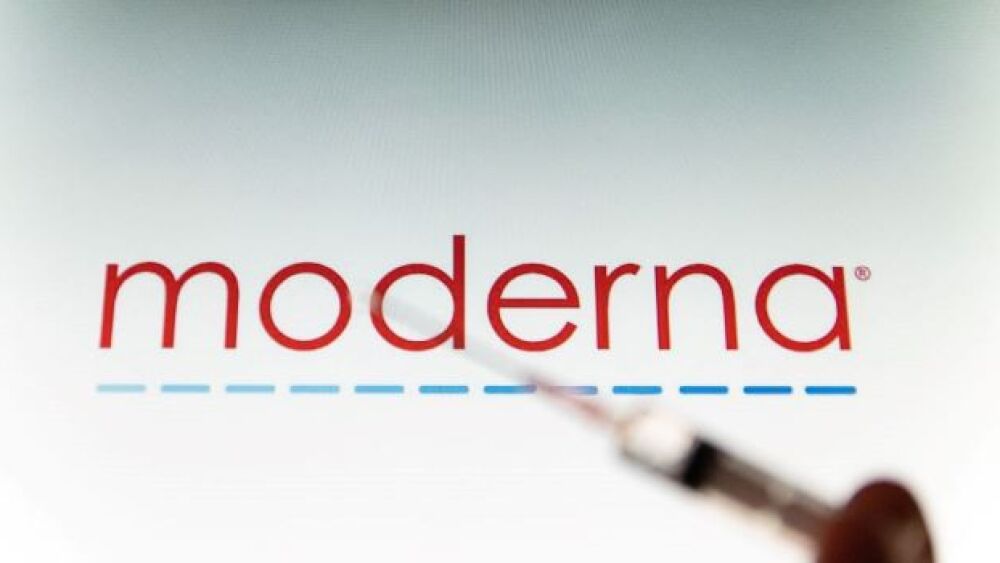Thursday, a committee of advisors for the CDC voted unanimously for children and teens, ages six to 17 to receive Moderna’s COVID-19 vaccine.
Nicolas Economou/NurPhoto via Getty Images
On Thursday afternoon, a committee of advisors with the Centers for Disease Control and Prevention voted unanimously for children ages 6 to 17 to receive Moderna‘s COVID-19 vaccine.
Providing CDC Director Dr. Rochelle Walensky gives the official go signal, there will be another option for this age group, joining the already approved Pfizer and BioNTech.vaccine. The CDC’s advisors voted 15-0 in two tallies.
On Saturday, a committee of independent vaccine experts with the CDC voted unanimously on its recommendation for children ages six months to five years to receive the COVID-19 vaccination series. After the vote, the White House reported that vaccinations for children under five would be available starting on Tuesday.
The U.S. Food and Drug Administration has granted Emergency Use Authorization to both COVID-19 vaccines offered by Pfizer and BioNTech and Moderna. The dose regimens are slightly different for each vaccine, with the Pfizer-BioNTech vaccine series being a three-shot regimen and Moderna being a two-dose regimen. Walensky stated that all children six months and older, including those who have already been infected with SARS-CoV-2, should get the COVID-19 vaccine.
“Together, with science leading the charge, we have taken another important step forward in our nation’s fight against COVID-19,” Walensky said Saturday in a statement. “We know millions of parents and caregivers are eager to get their young children vaccinated, and with today’s decision, they can. I encourage parents and caregivers with questions to talk to their doctor, nurse, or local pharmacist to learn more about the benefits of vaccinations and the importance of protecting their children by getting them vaccinated.”
The American Academy of Pediatrics (AAP) released a statement Saturday saying that it recommends COVID-19 vaccinations for all infants, children and adolescents six months of age and older who do not have contraindications to receiving a COVID-19 vaccine. As of June 9th, the AAP reported that 13.8% of reported weekly COVID-19 cases were attributed to children, with 88,000 child cases reported that week. In 2021 during the same week, 14,400 child cases were reported.
According to the AAP, over 13.5 million children have tested positive for COVID-19 since the onset of the pandemic. Although some children who become infected have a mild illness, children themselves are not impervious to the potential long-term effects of the disease.
In April 2020, Multisystem Inflammatory Syndrome in children (MIS-C) was first identified in the U.S. after children became infected with COVID-19. Currently, researchers report it as a rare complication of COVID-19 in children, occurring in less than one percent of those infected. The condition causes organs and tissues in the body to become inflamed, including the heart, lungs, kidneys, brain, skin and eyes, and shares similarities with Toxic Shock Syndrome. Without prompt treatment, MIS-C can cause lasting organ damage.
Little is known about the connection between COVID-19 and MIS-C, much like other potential consequences of COVID-19 infection in children. More recently, there have been reports of liver manifestations in children who have been infected. In May, Science reported that 176 children in the U.K. and 500 children worldwide had become infected with a mysterious hepatitis that causes acute liver inflammation. Some studies indicate that the hepatitis could be spawned from previous COVID-19 infection. Other researchers have said that liver function should be evaluated in all cases of severe COVID-19 and COVID-19 should be considered as a cause for hepatitis even in the absence of significant respiratory or other systemic symptoms.
Long COVID has also been a concern for toddlers and adolescents. How common Long COVID is in children remains unknown, but some studies report that up to 66% of infected children experience symptoms after their infection, with the most common symptoms reported being headache, fatigue, sleep disturbance, abdominal pain and joint pain.
To better understand the long-term outcomes of COVID-19 in adult and pediatric populations, the National Institutes of Health launched its REsearching COVID to Enhance Recovery (RECOVER) Initiative in September 2021 to learn why prolonged symptoms occur in those who have had COVID-19. Planned pathology studies will hopefully reveal how the virus affects all bodily systems and inform future treatment pathways.





